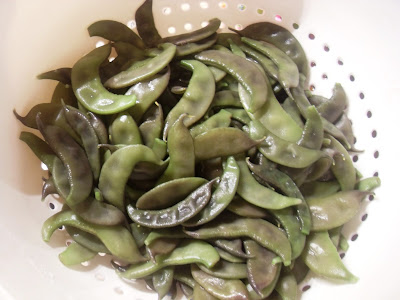Over Veteran's Day my wife lovingly provided me with the time to clean up my summer garden and harvest my sweet potatoes. The crop experienced a light frost a couple days beforehand and I reasoned that I would not have any time between then and when a hard frost came to spend cleaning up my summer garden.
 |
| My Summer Garden Back in August |
 |
| A light frost and time off provides clean-up opportunities |
 |
| My 2012 Summer Garden has come to an end |
Due to the extent of the vine growth, most of my time was spent cutting back Purple Hyacinth Bean and Sweet Potato foliage.
 |
| A few of the composted vines - my wife humored me in taking this picture |
It is difficult to see the end of a season, though, especially in warmer climates – the death of plants in one season means the life of plants in the new season.
~With this thought I say goodbye to summer and hello to winter!~




























